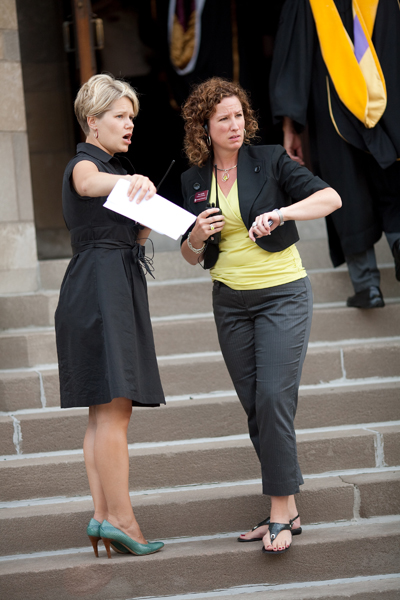 I wasn’t going to read Lean In. I just knew it would annoy me. I’d read the news coverage and commentaries and blog posts. Oh, so we women are just supposed to work harder? Somehow, this crazy train of inequality was our fault? A white woman with two Ivy League degrees, worth millions, and bestowed with considerable privilege is telling the country’s women to do more, that we have a responsibility to succeed?
I wasn’t going to read Lean In. I just knew it would annoy me. I’d read the news coverage and commentaries and blog posts. Oh, so we women are just supposed to work harder? Somehow, this crazy train of inequality was our fault? A white woman with two Ivy League degrees, worth millions, and bestowed with considerable privilege is telling the country’s women to do more, that we have a responsibility to succeed?
Even the title bothered me. No way, not gonna read it. I don’t need any more stress in my life.
But the articles and commentary and news coverage didn’t stop, and Sheryl Sandburg didn’t stop talking either. And while some writers showed that all-too-common contemporary propensity to write about something they haven’t read but have formed an opinion about based on what other people said somewhere else, other writers were saying interesting things about the book. About being a woman trying to work. About women’s lack of progress at the top. About women’s insecurities or conditioning holding them back.
So I read it. So did Breanne. Then we started talking about it, and we haven’t stopped either.
I think that’s the power of this book. It has opened the conversation again. The one our mothers’ generation had but that we somehow stopped in its tracks. Since girls are doing better than ever in school, math, science, sports, college graduation, and graduate school, inequality will work itself out, right? Yeah, not so much.
Reading this book together also tapped into something we feel we need to discuss more often, more openly, and with more people. What kind of professional life do we want to build? How do we define success? If we succeed, what are we obligated to do for others? How do we negotiate a raise? Learn to speak up when we know better, or take risks when we don’t? Create a network? Change from within? Change from without? Beat the old boys at their own game? Create a new game where their old rules don’t apply anymore?
We are women. Our work is important to us. We are ready to lean in, move forward, carry on. On this blog that means we’ve added a new category of posts — work — and we have plenty to say about it (like this, this, this, and this). We hope you will join in the conversation.
To get started, we tapped our inner editors and forced ourselves to pare down our thoughts to just a few, for now. Five things (each) in Lean In that we can’t stop thinking about.
Breanne’s Lean In List
1. It was helpful in heading back to work to be reminded that studies show that kids who attend child care do as well as those who don’t. Also, that working moms today spend on average 11 hours a week engaged in active parenting (reading, playing, doing routine tasks), the same as a stay-at-home moms did in 1975.
2. Sandburg talks about women and family-friendly workplaces and how Facebook works its staff hard but welcomes kids and families around the workplace, because they know having dinner with mom or dad will make it easier for that employee to work late into the evening. I’ve always kept my work and family separate but I think there are some real wins for everyone (employers especially) by welcoming kids and families at the workplace — in appropriate ways, of course. While I’m not a CEO who can build a nursery adjacent to my office (Marissa Meyer) or hold evening work meetings at my house (Tiny Fey), I was inspired by their example to look for and hire a nanny a block away from my office. Having Blythe nearby and being able to see her and feed her sometimes instead of pumping makes it so much easier to be at work and be productive for long hours.
3. Don’t apologize for what you don’t know. Sandburg’s colleagues at the World Bank were astonished when she started working there without knowing how to use Lotus 1-2-3 software. In a very pragmatic way women tend to volunteer their shortcomings or apologize for what they don’t know, when at best these admissions are unnecessary and at worst, harmful to their reputations. I thought of this when I was in a work meeting last week and dragging because I’d been up twice with a stuffed-up Blythe and once with a potty-training Beatrice. I was about to apologize for not being at my best and explain that I’d been up half the night, then I realized that it was just me who was aware that I could be participating more, that no one else probably even noticed. Why put my professional self down if I don’t have to?
4. Sandburg quotes Pattie Sellers for this gem: “Careers are jungle gyms, not ladders.” I was fascinated by Sandburg’s tales of colleagues taking on whole new areas — like marketing professionals taking on HR, or operations — in order to grow their careers. Huge gains can be realized by learning a new area of the business or helping out where the company needs it most. And if you’re not necessarily interested in climbing to the top of the ladder you’re on, move around and find something you do want to advance in, because life is too long to stay stuck on the same ladder.
5. “There is a special place in hell for women who don’t help other women.” Another gem, this time from Madeline Albright.
Jen’s Lean In List
1. That 41 percent of American mothers are the primary breadwinners in their families. I guess that should not have surprised me, but it did a little. If close to half of America’s primary breadwinners are chronically underemployed and underpaid, this is a significant macroeconomic issue.
2. Sandburg’s anecdotes about trying to convince women they were, in fact, up for a challenge she had offered them. She writes:
I have had countless conversations where women responded to this encouragement by saying ‘I’m just not sure I’d be good at that,’ or ‘That sounds exciting, but I’ve never done anything like it before,’ or ‘I still have a lot to learn in my current role.’ I rarely, if ever, heard these kinds of comments from men.
I have had similar conversations with women I worked with or friends on the job search trail; it didn’t occur to me that it might be gender-based.
3. This difference between how men and women approach job searches:
An internal report at Hewlett-Packard revealed that women only apply for open jobs if they think they meet 100 percent of the criteria listed. Men apply if they think they meet 60 percent of the requirements. This difference has a huge ripple effect. Women need to shift from thinking “I’m not ready to do that” to thinking “I want to do that— and I’ll learn by doing it.”
I just mentioned this story to a colleague of mine who is a vice president, insanely good at her job, and has decades of experience. After I got done telling her about this, she admitted she’d just recently passed up an interesting job posting because she had concluded she didn’t meet all the requirements. Wow. Just wow.
4. This idea: don’t leave before you leave.
But when it comes to integrating career and family, planning too far in advance can close doors rather than open them. I have seen this happen over and over. Women rarely make one big decision to leave the workforce. Instead, they make a lot of small decisions along the way, making accommodations and sacrifices that they believe will be required to have a family. Of all the ways women hold themselves back, perhaps the most pervasive is that they leave before they leave.
Nearly three years ago, I left my job as a department head with a large portfolio and a team of 15. And while I didn’t turn down large assignments in my last two years, I had been working toward leaving — saving money, making changes at home, waiting for the day. Consequently I did absolutely zero work on professional development, networking, training, or long-term planning. I left before I left.
5. This completely revolutionary idea:
A truly equal world would be one where women ran half our countries and companies and men ran half our homes.
Seriously, never in any of the conversations about women and work, success, leadership, government, etc., is the other half of the equation mentioned. Instead of women achieving parity while also managing their families, what if we just split the difference? How much different would this world be? Truly mind-bending.
Have you read Lean In? What’s on your list? Please share, we’d love to talk with you about it!
All excerpts © Sandberg, Sheryl. Lean In: Women, Work, and the Will to Lead. Knopf Doubleday Publishing Group. Kindle Edition. 2013.



